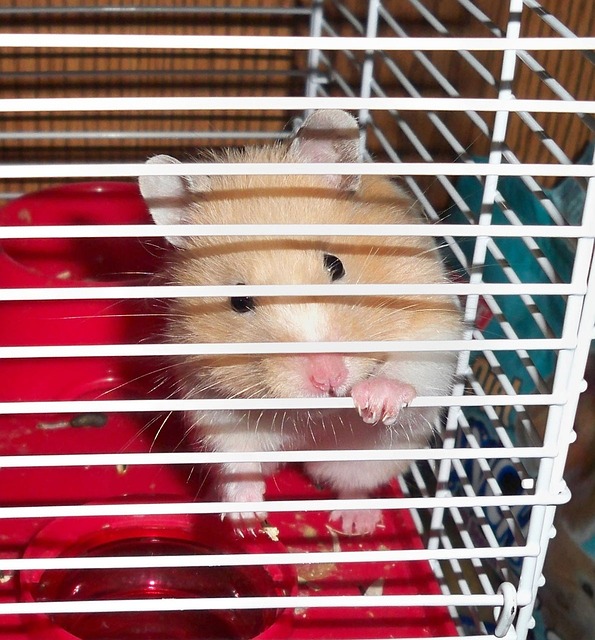Many people love having hamsters as pets. They are cute, cuddly, and easy to take care of. However, sometimes the smell of hamsters can become overwhelming and fill the house. Homeowners may wonder why their house smells like hamsters and what they can do to eliminate the odor.
There are several reasons why a house might smell like hamsters.
One of the most common causes is poor ventilation. Hamsters produce a lot of waste; if their cages are not adequately ventilated, the smell can quickly spread throughout the house.
Another reason could be that the hamster’s cage is not cleaned frequently enough. Hamsters are known to be messy creatures, and if their cages are not cleaned regularly, the smell can become overpowering.
Possible Causes
If you’re wondering why your house smells like hamsters, there could be several possible causes. Here are some of the most common reasons why you might be experiencing this unpleasant odor:
Dirty Hamster Cage
If you have a hamster or other small pet, a dirty cage could be the culprit behind the smell. Hamsters are known for their strong odor; if their cage isn’t cleaned regularly, the smell can quickly become overpowering.
In addition to cleaning the cage itself, it’s essential to regularly change the bedding and any toys or accessories in the cage.
Leaking Pipes
Another possible cause of a hamster-like smell in your home is leaking pipes. Leaking somewhere in your plumbing system can cause moisture to accumulate on your walls or floors. This moisture can lead to the growth of mold and mildew, which can produce a musty, hamster-like odor.
Mold and Mildew
Mold and mildew are common culprits behind unpleasant odors in the home. These fungi thrive in damp, humid environments and can quickly spread if left unchecked.
If you suspect mold or mildew might cause the hamster-like smell in your home, it’s essential to have a professional come and assess the situation.
They can help you identify the problem’s source and devise a plan to eliminate it.
In conclusion, if you’re experiencing a hamster-like smell in your home, several possible causes exist. However, by identifying the source of the odor and taking steps to eliminate it, you can enjoy a fresh, clean-smelling home again.
Solutions
Clean the Hamster Cage
One of the most common reasons why a house may smell like hamsters is due to an unclean hamster cage. If the hamster’s bedding, food, and water are not changed regularly, it can lead to an unpleasant odor.
The hamster cage should be cleaned at least once a week to solve this issue.
This includes removing all the bedding, washing the cage with soap and water, and replacing the bedding with fresh material. Additionally, the hamster’s food and water bowls should be cleaned daily.
Check for Leaks
Another reason a house may smell like hamsters is a leak in the plumbing or a faulty drain. If there is a leak, it can cause water to accumulate in areas where there shouldn’t be any, leading to a damp and musty smell.
To solve this issue, it’s essential to locate the source of the leak and fix it immediately. This may require the help of a plumber or a handyperson.
Inspect for Mold and Mildew
If the hamster cage is clean and there are no leaks, the smell may be due to mold and mildew. These fungi thrive in damp and humid environments and can cause a musty odor. To solve this issue, inspecting the house for any signs of mold or mildew is essential.
This includes checking areas such as the bathroom, kitchen, and basement. If mold or mildew is found, it should be removed immediately using a solution of bleach and water. It’s also essential to fix any leaks or moisture problems that may be contributing to the growth of mold and mildew.
In summary, to solve the problem of a house smelling like hamsters, one should clean the hamster cage regularly, check for leaks, and inspect for mold and mildew. By following these steps, one can ensure that their house smells fresh and clean.
Prevention Tips
Regular Hamster Cage Cleaning
One of the most effective ways to prevent your house from smelling like hamsters is to clean their cages regularly. Hamsters are known for their pungent smell, and their cages can quickly become a source of unpleasant odors if not cleaned regularly.
It is recommended to clean the hamster cage at least once a week. Remove all the bedding and wash the cage with soap and water.
Dry it thoroughly before adding fresh bedding. It is also essential to clean the food and water bowls regularly. This will keep the cage smelling fresh and ensure the hamster’s health.
Proper Ventilation
Proper ventilation prevents the hamster smell from spreading throughout the house. Hamster cages should be placed in a well-ventilated area, away from direct sunlight and drafts.
Opening windows and using fans can also help improve air circulation and prevent the buildup of unpleasant odors. Additionally, using an air purifier can help remove any lingering smells.
Prompt Leak Repair
If you notice a leak or moisture buildup near the hamster cage, it is essential to address it promptly. Moisture can cause the growth of mold and bacteria, which can contribute to unpleasant odors.
Check for any leaks in the cage or water bottle and fix them immediately. If the hamster cage is placed on a carpeted surface, consider using a plastic mat to prevent moisture buildup and make cleaning easier.
In summary, regular cleaning of the hamster cage, proper ventilation, and prompt leak repair can go a long way in preventing your house from smelling like hamsters. By following these tips, you can enjoy the companionship of your furry friend without worrying about any unpleasant odors.




